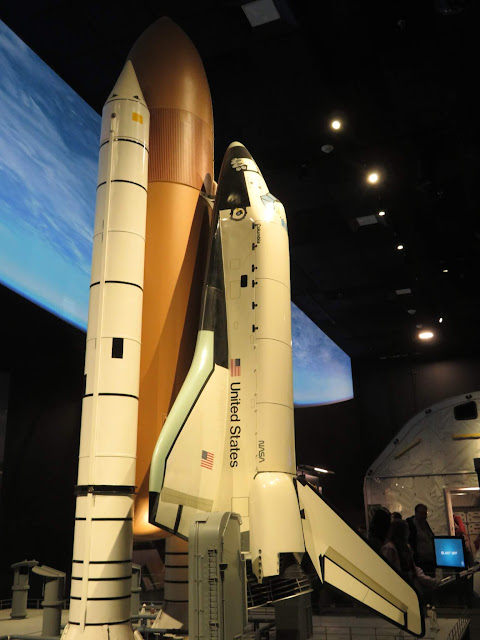From Moon landings to Mars missions: A toddler's POV of the space age
That's one small step for [a] man. One giant leap for mankind.
– Neil Armstrong (July 20, 1969)
My fascination with the space age began when I watched a 1980s cartoon about the different periods of human civilisation (e.g., Stone Age, Bronze Age, Iron Age, and Space Age). I seized the opportunity to visit the Kennedy Space Centre on my first visit to the USA almost two decades ago. I also saw the Air and Space Museum in Washington, D.C.
I probably have been passing on my interest in space exploration to Donan—subconsciously—because when he started to stitch words into sentences, some of his first topics were rocket ships! I only fueled his interest when we started frequenting NASA's Ames Visitor Centre at the Chabot Space and Science Centre (I am not exaggerating when I say that he can lead a tour group before he's even potty trained; that's how interested he is about space exploration).
Thanks to the wonders of the internet and supportive family members, Donan has amassed an impressive body of knowledge about manned space flight that has exceeded what I had known when I was younger. For example, he could name the different Space Shuttles and their parts. He can point out which one is the main fuel tank and which are the solid rocket boosters on a Space Shuttle exhibit. He knows which Space Shuttles had exploded (i.e., Columbia and Challenger).
Space Shuttle in launch position on a crawler transporter
He knows that the Apollo Space Programme used the Saturn V rocket to launch astronauts towards the Moon and that the rocket has three stages (Stages I, II, and IVB) and a launch escape system. He can point out the command module, the service module, and the lunar exploration module. As a plus, he knows that the service module exploded in Apollo 13, so Jim Lovell's crew did not land on the Moon.
Apollo service module and command module combo docked to a Soyuz spacecraft
Donan can also talk about the N1 rocket, the Soviet equivalent of the Saturn V. Unlike Saturn V, however, N1 only experienced failed launches. He doesn't speak much about the Apollo-Soyuz rendezvous but can describe how spaceships dock onto the International Space Station.
Friendship 7 capsule
Donan doesn't mention the Mercury or the Gemini programmes as frequently as he does Apollo. However, if he ever sees a capsule (like in Chabot Space and Science Centre), he can easily recognise a Mercury or a Gemini space capsule.
His interest in space exploration also includes NASA's Artemis programme (which aims to send man to Mars), Elon Musk's SpaceX Falcon 9 and Falcon 9 Heavy, and United Launch Alliance's (ULA) Delta IV Heavy and Vulcan Centaur. He's fascinated by factory tour videos of ULA's facility in Alabama and interviews with ULA's CEO, Tory Bruno. Donan used to talk about Perseverance and Curiosity, two of the rovers currently on Mars. Still, his interest in rovers has shifted to Voyager and Explorer, spacecraft that explore the outer planets (Jupiter and beyond) and the inner planets (including Mercury and Venus), respectively.
How long will this interest in outer space last? Only time will tell. For now, I'll soak up on all his questions and learn together about how man is going to unlock the secrets of the rest of the Solar System (and beyond).




Comments
Post a Comment
Thank you for dropping by!
Before moving on, please share your thoughts or comments about the post. :)
Thanks again!